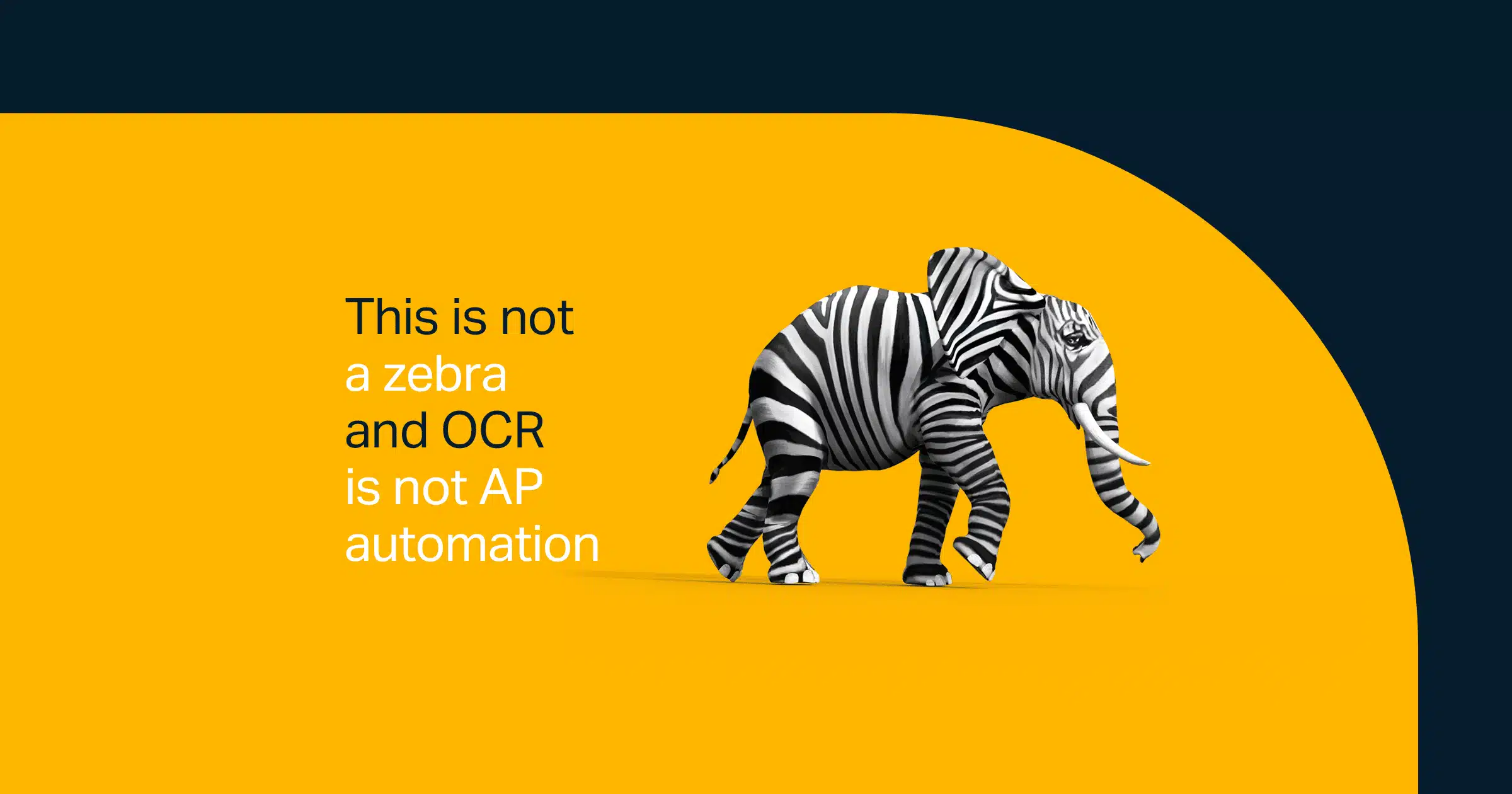Five Reasons Why OCR Isn’t Enough
Optical Character Recognition (OCR) powered AP software tools save businesses time by using automation to extract readable data from invoices into machine-coded text.
The mass adoption of OCR has freed up finance team members from keying in data themselves, enabling them to focus on less repetitive and tedious tasks. However, using OCR to inform your entire AP automation strategy can only take you so far. Its accuracy is limited and only automates a sliver of the range of AP tasks completed by finance departments.
In this current economic environment, businesses need to leverage AP automation tools that remove manual processes from supplier onboarding to processing and reconciling payments. This will empower them to produce accurate real-time data to make agile decisions for whatever comes next. Analyze
Below are five reasons your AP workflows should not rely solely on OCR.
1. Accuracy Is Limited
OCR is only accurate 85%-90% of the time. This partial accuracy means data extraction of invoices isn’t fully automated. CFOs need to look at either costly verification services or recruit staff resources to review and verify the accuracy of extracted data from all invoices.
Alongside taking up work hours to perform checks, there is still the risk of data being imported into ERP software inaccurately due to human error. Additionally, data processing isn’t instant due to manual checks needing to be applied.
Inaccuracies can lead to suppliers being paid the wrong values and create further admin, as well as inaccurate forward-looking forecasts that can impair decision-making and cash flow visibility.
2. It Can’t Extract All Relevant Data Fields from New Invoice Types
OCR has been around since the 1970s, making it a pretty ancient technology. However, it only recently picked up mainstream use with the adoption of cloud computing.
This means OCR can struggle to extract relevant data on newer invoicing types that may not be laid out in a traditional format or style. This further undermines OCR’s accuracy and could create compliance issues, such as taxes, if values aren’t extracted correctly.
OCR is relatively simple; it tries to extract the information it’s programmed to capture and isn’t capable of understanding an invoice’s underlying data or context. But, its accuracy and capabilities can be enhanced to accommodate different invoice types by using machine learning technology.
Machine learning goes beyond data extraction by analyzing the structures of multiple invoices and looking for patterns to distinguish between different components, such as numerical addresses, total values, and due dates.
AP software platforms that combine OCR with machine learning can handle a wide array of invoice types and extract data as values, placing them into the correct fields for posting on ERP systems.
3. It Doesn’t Support the Onboarding of New Suppliers
Many CFOs believe that AP automation begins and ends with OCR. However, it only fulfills one of many supporting AP activities.
One of the most critical elements of AP is onboarding new suppliers and ensuring their data is accurately collected and entered across all relevant systems.
This is the first touch point new suppliers will undergo with purchasing companies, and it’s critical to provide them with a positive experience to build a stronger overarching relationship where each party can be vested in the other’s success.
Automated supplier onboarding activities should include verifying bank accounts and collecting tax documentation and contact information via a self-serve platform.
4. The Risk of Fraud Is Still an Issue
OCR isn’t able to detect fraud. Not using fraud detection for your AP workflows creates the risk that company funds may become misappropriated due to bogus supplier invoices or legitimate invoices being tampered with across the AP lifecycle, such as during the approvals process or at the time of payment.
This is more likely to occur if you undertake disconnected manual processes that require input from multiple staff members.
The risk of setting up fraudulent invoices for payment can be minimized by using AP software tools to detect unusual patterns, show where a threat has been identified, automatically open cases, and notify team members.
5. Finance Teams Members Have to Duplicate Data into Payments Systems
While OCR automates the accurate extraction of invoices most of the time, it doesn’t eliminate manual data entry across the entire AP lifecycle.
For example, when making payments, payee details will either need to be manually entered directly into banking software, or finance team members will have to create and modify CSV files to upload onto their banking platforms.
This is time-consuming and creates the risk of human error. Most frustratingly, finance leaders will have to duplicate data that has already leveraged automation through OCR.





